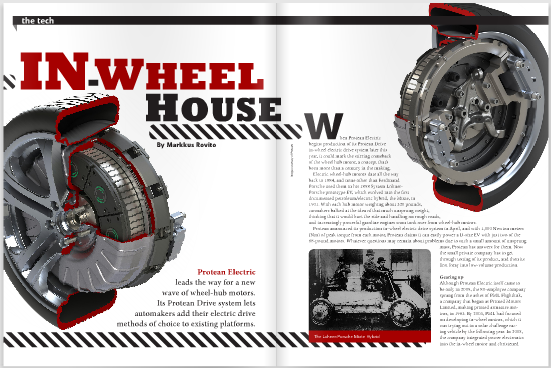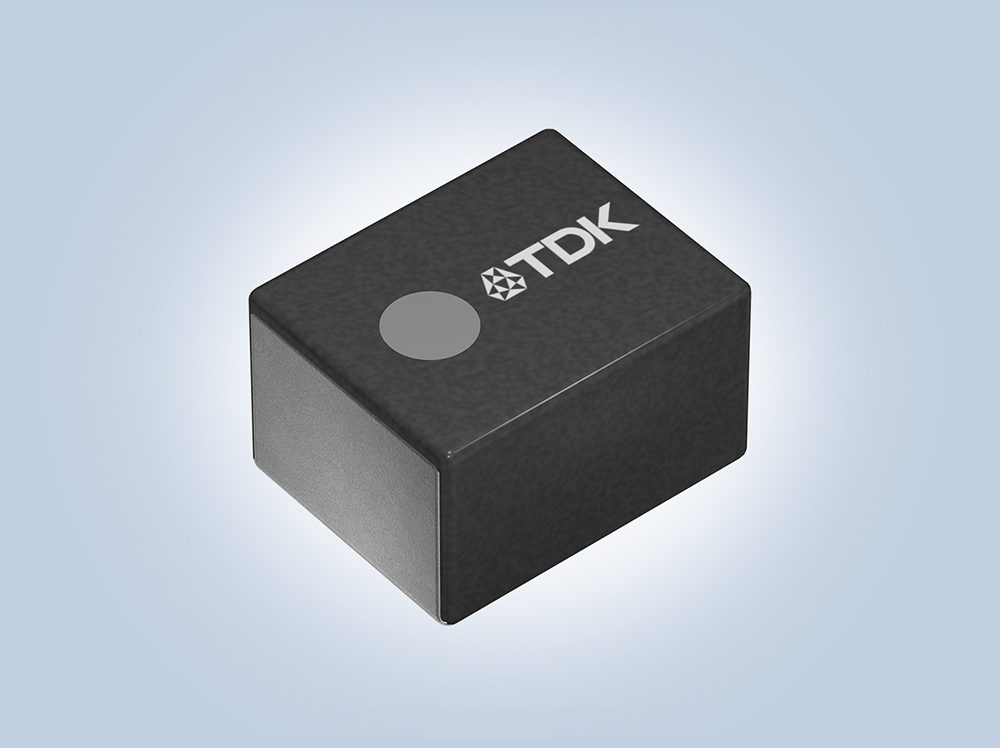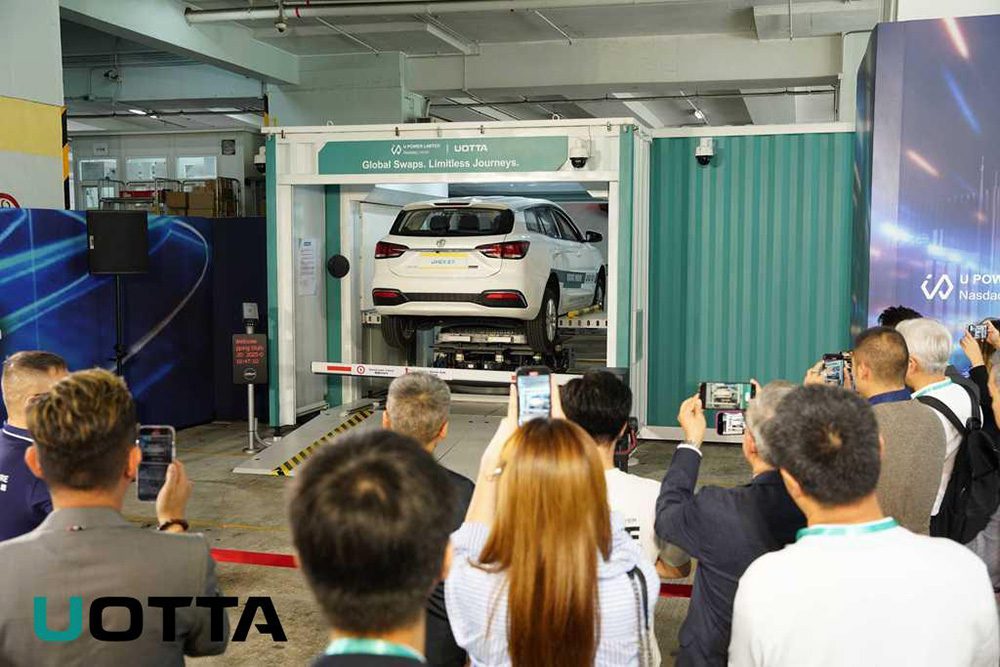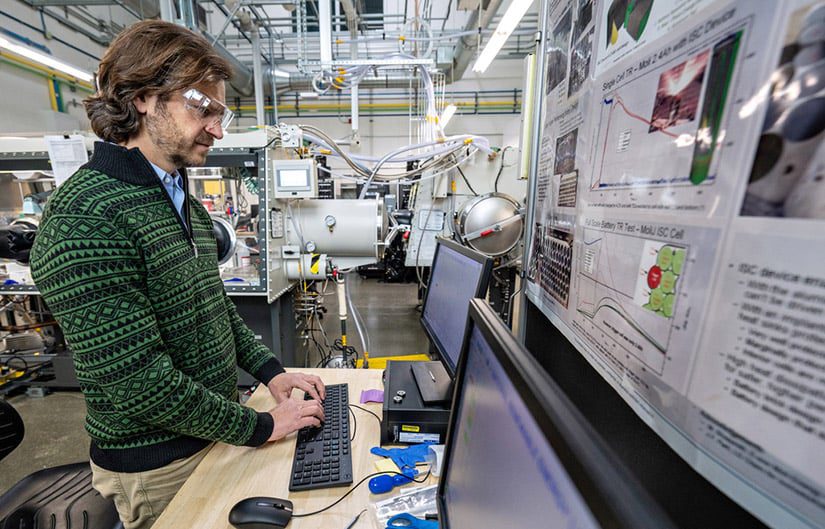When Protean Electric begins production of its Protean Drive in-wheel electric drive system later this year, it could mark the stirring comeback of the wheel hub motor, a concept that’s been more than a century in the making.
Electric wheel-hub motors date all the way back to 1884, and none other than Ferdinand Porsche used them in his 1898 System Lohner-Porsche prototype EV, which evolved into the first documented petroleum/electric hybrid, the Mixte, in 1901.

With each hub motor weighing about 320 pounds, carmakers balked at the idea of that much unsprung weight, thinking that it would hurt the ride and handling on rough roads, and increasingly powerful gasoline engines soon took over from wheel-hub motors.
Protean announced its production in-wheel electric drive system in April, and with 1,000 Newton meters (Nm) of peak torque from each motor, Protean claims it can easily power a D-size EV with just two of the 68-pound motors. Whatever questions may remain about problems due to such a small amount of unsprung mass, Protean has answers for them. Now the small private company has to get through testing of its product, and then its first foray into low-volume production.
Gearing up
Although Protean Electric itself came to be only in 2009, the 80-employee company sprang from the ashes of PML Flightlink, a company that began as Printed Motors Limited, making printed armature motors, in 1963. By 2003, PML had focused on developing in-wheel motors, which it was trying out in a solar challenge racing vehicle by the following year. In 2005, the company integrated power electronics into the in-wheel motor and christened the technology the Hi-Pa Drive. In 2006, the Hi-Pa drive debuted at the London Motor Show, and in 2007, Silicon Valley VC firm Oak Investment Partners made its first investment in PML Flightlink.
Oak Partners has been a constant investor in Protean, and in 2009, Oak bought PML Flightlink outright, spinning off its efforts into two separate businesses. The in-wheel motor side became Protean Electric, and the Hi-Pa Drive was renamed the Protean Drive. Last July, Protean added several Chinese investors – GSR Ventures, Jiangsu New Times Holding Group, and the city of Liyang – who, along with continued support from Oak, chipped in a total of $84 million in Series C funding for Protean. Not coincidentally, Protean also announced the establishment of its first volume manufacturing facility in Liyang, China.
Now with money in the bank, 27 patents (and 84 applications pending), a low-volume manufacturing arrangement, and a production design in testing, Protean is just about ready to unleash the decade-in-the-making Protean Drive. Where would they like to see it? Anywhere and everywhere.
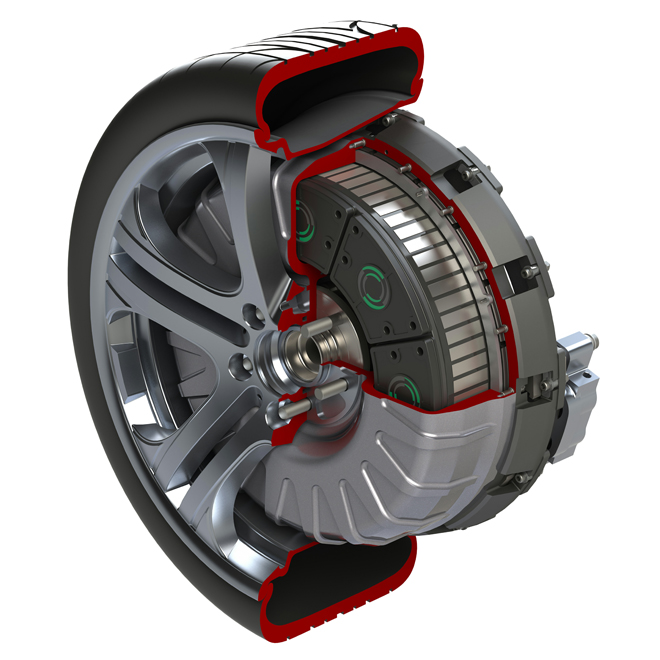
De-greasing the wheels
Each Protean Drive in-wheel motor can deliver 75 kW (100 hp) peak power and 1,000 Nm (735 lb/ft) peak torque, and weighs 31 kg (68 lbs). On a conventional 18-inch wheel with a typical tire size, top speed is roughly 120 mph. The motors are designed to fit behind any conventional 18-24-inch road wheel, so they are suitable for C-, D-, and E-sized cars, crossovers, vans, pickup trucks, and even Class 2 trucks. They can be used in hybrids, PHEVs, or EVs, in rear-wheel, front-wheel or all-wheel drive applications – all using existing platforms.
“If you look at today’s light-duty market and ask ‘what part of the industry is addressable with a 18-inch motor?’ our calculations say it’s about 53 percent,” said Ken Stewart, Protean’s VP of Business Development and a 30-plus-year veteran of vehicle manufacturing. The initial 18-inch Protean Drive is undergoing final testing validation at Protean’s Farnham, England engineering center, and the company is building a production tool set in Munich, Germany. By early 2014, Protean expects to begin low-volume production at its Chinese plant.
Roughly two years after that, Stewart expects to start phased production of a smaller Protean Drive with a lower power rating that will address the remainder of the light-duty market, “all the way from the upper end of city cars to the first half of the C-segment cars,” he said.
It comes as no surprise that Protean execs can run down an extensive list of benefits they think will attract OEMs and tier-one suppliers to the Protean Drive. They say its superior regenerative braking allows up to 85 percent of available kinetic energy to be recovered; it can increase fuel economy by more than 30 percent depending on the battery size and driving cycle; and it can be used to retrofit existing fleets or to deliver hybrid or electric technology faster and with fewer new parts, less complexity, lower total cost, and fewer changes and disruptions to the assembly plant than other leading electric drive systems.
 The Protean Drives can be the only source of traction on a variety of vehicles. It can also improve vehicle packaging because it occupies the air space behind an 18-inch wheel, packing a lot of torque into a small space that formerly was not occupied by anything.
The Protean Drives can be the only source of traction on a variety of vehicles. It can also improve vehicle packaging because it occupies the air space behind an 18-inch wheel, packing a lot of torque into a small space that formerly was not occupied by anything.
“The rotor’s on the outside, and the stator is really on the back side,” Stewart said. “There’s a back plate that we affix the electronics to. Also, the back plate stator doubles as a liquid coolant jacket that keeps the back side electronics cool. There’s no oil or water being put into the motor itself. Also, 1,000 Nm is a boat-load of torque density – in part it’s because of the circumference of our magnetic field due to the rotor design being on the outside.”
Bob Purcell, who is often called “the father of the EV1,” became chairman and CEO of Protean Electric in October, 2010. At the 2013 SAE World Congress in Detroit this April, Purcell addressed an audience to announce the finished production design of the Protean Drive. “It’s a purpose-built motor, specifically designed to deliver power and torque to the wheel; that’s where you need it,” he said. “No drive shafts; no gear sets; no transmissions; no differentials. You direct-drive the wheel with the motor. Since the motor fits behind the conventional road wheel and bolts onto an existing automotive hub and bearing system, there’s no tear-up of the engine compartment, transmission, drive line, or even exhaust. This is probably the closest the industry will ever get to true bolt-on electric drive.”

The wheels on the Brabus
To prove Protean Drive’s worth, the company has put together a collection of eight demonstration vehicles, spread across four continents, to show prospective clients and partners. These include Volvo C30 and Ford F-150 all-wheel drive battery EVs, and a Vauxhall Vivaro PHEV van that shows two rear Protean Drive motors powering an urban fleet-size vehicle. The flagship demos are three Mercedes-Benz E-Class cars that specialty carmaker Brabus retrofitted into a hybrid and two EVs using Protean Drives for the 2011 Frankfurt Motor Show. Stewart reported that Brabus basically bolted on the Protean Drives.
“These were basically Brabus suspension, Brabus wheels and tires,” he said. “We did not do any formal ride and handling work. We didn’t swap out any parts for the sake of improving ride and handling with the in-wheel motors. Yet those vehicles drove very well.”
 The old concerns about unsprung mass that dogged the earliest models of in-wheel motors still apply today, but Protean feels confident that those fears are easily allayed.
The old concerns about unsprung mass that dogged the earliest models of in-wheel motors still apply today, but Protean feels confident that those fears are easily allayed.
“Unsprung mass can be addressed through engineering,” Stewart told us. “It’s not like you add just one kilogram of unsprung mass and there’s this big step function reaction in the car. There’s no threshold between good and bad. Obviously lighter unsprung mass is better, however, it’s not like a ‘go/no-go’ situation.”
A recent white paper by Martyn Anderson of Lotus Engineering and Damian Harty of Dunamos Ltd. titled “Unsprung Mass with In-Wheel Motors – Myths and Realities” is available as a PDF at ProteanElectric.com. In the summary, the authors wrote, “the modern development toolbox is easily capable of restoring dynamic performance, and the opportunities afforded by in-wheel motors in terms of packaging and vehicle dynamics control are of substantial interest to the vehicle dynamics community.”
Stewart expanded on that, saying “If you add that mass you will change the vehicle dynamics. However, you can get back the ride and the handling and control of the car that you desire by conventional techniques like trading out shock valving, springs, bushings, etc. They also said that if you start to look at the advantages of torque vectoring, then it provides a clear advantage.”

Wheels of fortune?
At the 2013 SAE World Congress, Purcell wasn’t addressing the general public, but rather, he was specifically addressing the world auto industry. His message in a nutshell was: You’re going to need us.
“We now have one billion vehicles in operation in markets throughout the world,” Purcell said. “It took 130 years to get to that point. What’s amazing to me is that current forecasts are saying that we will put the next billion vehicles on planet Earth in the next 15 to 20 years. Governments around the world are responding to that. There are regulations regarding fuel economy and emissions in all the major markets in the world. If you look simply at fuel economy, there are fleet-directed fuel economy standards directed at all the major markets, whether you talk CAFE, CAFC or the EU CO2.”
The point is that many OEMs will need to reduce vehicle emissions for compliance, and fast. Protean thinks its “bolt-on” electric drive solution represents one – if not the best – option for converting existing ICE platforms to hybrid, PHEV, or EV with minimal time and expense.
Stewart expanded on Purcell’s point. “With population growth, economic development, and cities’ populations getting more dense, you’ve got to have another solution besides internal combustion engines,” he said. “The math just doesn’t work any other way.”
He continued by picking out the low-hanging fruit for Protean Drives as luxury cars, vans, crossovers and light-duty commercial applications. “This is a really good solution, especially for the upper half of the light-duty market, where there are bigger vehicles that need to be built because people want them, there’s profitability there, and people who have a job to do with a light-duty vehicle need to get their work done,” Stewart said.
While Protean will begin low-volume production at its wholly owned facility in China early next year, the plan is to license its technology to both OEM customers and tier one partners for high-volume production.
“I don’t have the first large-volume commercial agreement yet, but I’m anticipating that soon,” Stewart said. “We’re feeling good about our prospects. I could take about any light-duty car or truck in any parking lot and create a hybrid out of it in a few weeks time. The automakers like that.”
 Of course, automakers also like low costs. It will take a little while to get there, but Protean has a target price of about $1,500 per motor at high production volume. “If you look at that from kilowatts or Newton-meters per dollar, the figure is very competitive,” Stewart said. “We see the potential of this being the true low-cost solution over time. The motor fundamentally renders itself well to automation and low-cost manufacturing techniques. For example, our copper winding is all done by a winding system. We don’t have to thread wires through holes. We also have integrated electronic controls and power electronics in the motor, which can simplify cabling and so many other systems that are required for a standalone, separate box somewhere onboard the car.”
Of course, automakers also like low costs. It will take a little while to get there, but Protean has a target price of about $1,500 per motor at high production volume. “If you look at that from kilowatts or Newton-meters per dollar, the figure is very competitive,” Stewart said. “We see the potential of this being the true low-cost solution over time. The motor fundamentally renders itself well to automation and low-cost manufacturing techniques. For example, our copper winding is all done by a winding system. We don’t have to thread wires through holes. We also have integrated electronic controls and power electronics in the motor, which can simplify cabling and so many other systems that are required for a standalone, separate box somewhere onboard the car.”
Regardless of the cost of the Protean Drive, the company aims to save resources in other ways, such as reducing non-recurring engineering costs. “If you start eliminating drive shafts, differentials, and other drive-line components, you can provide a low-cost EV solution,” Stewart said. “In hybrids, you don’t have to retool the sheet metal, transmission aluminum diecastings; all those major tools, dies, and parts are expensive, and the engineering to change their shapes is pretty expensive. So we avoid a lot of that spending.”
Whether an OEM looks at making PHEV/EV models or converting an existing ICE platform to a hybrid, Stewart likes the advantages that Protean can offer. For example, going from ICE to hybrid, the entire power train system could be used again. “The entire closed loop fuel mapping, emission controls, EVAP, catalytic convertors and all that stuff could be maintained, and all you’d really have to do is reduce the burden on the engine itself,” he said. “EVs and hybrids do need a battery solution, but I can give them a leg up, because they don’t need to package an inboard motor and all the motor controls, which allows them either to minimize their costs and disruption, or they can use that unused space for more battery capacity.”
The road ahead
The first Protean Drive systems to be seen on the open road are likely to be in converted fleets rather than production cars, and Stewart hopes those fleets see action in a matter of months. However, while the validation of the production design and vehicle testing is still underway, Protean doesn’t want to rush anything. The company wants to take special care to ensure the life cycle of Protean Drive, which will be targeted at 240,000 km/10 years, or roughly the life of the vehicle. Safety, shock, and vibration are also all high priorities, Stewart said.
“It’s something that we’re paying a tremendous amount of attention to,” he said. “As you’d expect, if you put an in-wheel motor out on the unsprung mass area of the car, you’ve got to step up to the bar and deal with issues that come from that: shock, vibration, water sealing, and the robustness of the electronics.”
Protean submerged one of its motors at the SAE show to demonstrate its intention to meet all automotive environmental requirements, such as IP6K9K, a water protection rating that includes a need to operate submerged in water and exposed to high-pressure water.
Protean Drive will also comply with ISO 26262, a new safety standard for road vehicles. “It’s a relatively new standard where a traction motor on an automobile has to address not only certain standards about functional safety, but also the process you use to engineer the product must be sound,” Stewart said.
Now that the Protean Drive – which Car & Driver named one of the 10 Most Promising Technologies for 2013 – is in the home stretch of its 10-year journey to market, there’s still some question as to whether it will be the first modern in-wheel motor to see real-world use. Michelin’s Active Wheel, a 92 lb wheel with an electric motor and suspension inside, debuted in 2008, linked to the Venturi Volage concept car, and showed up in the 2009 Peugot BB1 electric concept microcar. Michelin still showcases the wheel on rare occasions, but new information on the project is sparse.
A more active competitor is German conglomerate Schaeffler, which announced the beta version of its E-Wheel Drive electric wheel hub drive in April. It weighs 53 kg and delivers 700 Nm of torque. Schaeffler has partnered with Ford, and is demonstrating the E-Wheel Drive in a development Ford Fiesta. However, it does seem that the E-Wheel Drive is further away from production than the Protean Drive.
Stewart told us that the OEMs he speaks to say that Protean is the closest in-wheel electric motor to production, but that’s as far as he goes. “Nobody’s got the patents, IP, and the design that we have or the commercial path that we have,” he said. “But I don’t want to be too boastful. I’ve been in the automotive business for over 30 years; it tends to make you humble.” That deep car-industry experience is something that CEO Purcell – another 30-year-plus industry vet – also emphasized to potential customers. “This is not a group of wild-eyed inventors in a garage,” Purcell said. “We know what it takes to make a component set, to make a system work in the auto industry – fully certified to all prevailing global automotive standards. As China and India come online, it’s going to absolutely drive the world to new solutions for automotive transportation. Protean Electric offers a smooth transition to this new era of the automobile.”
This article originally appeared in Charged Issue 8 – JUN 2013







